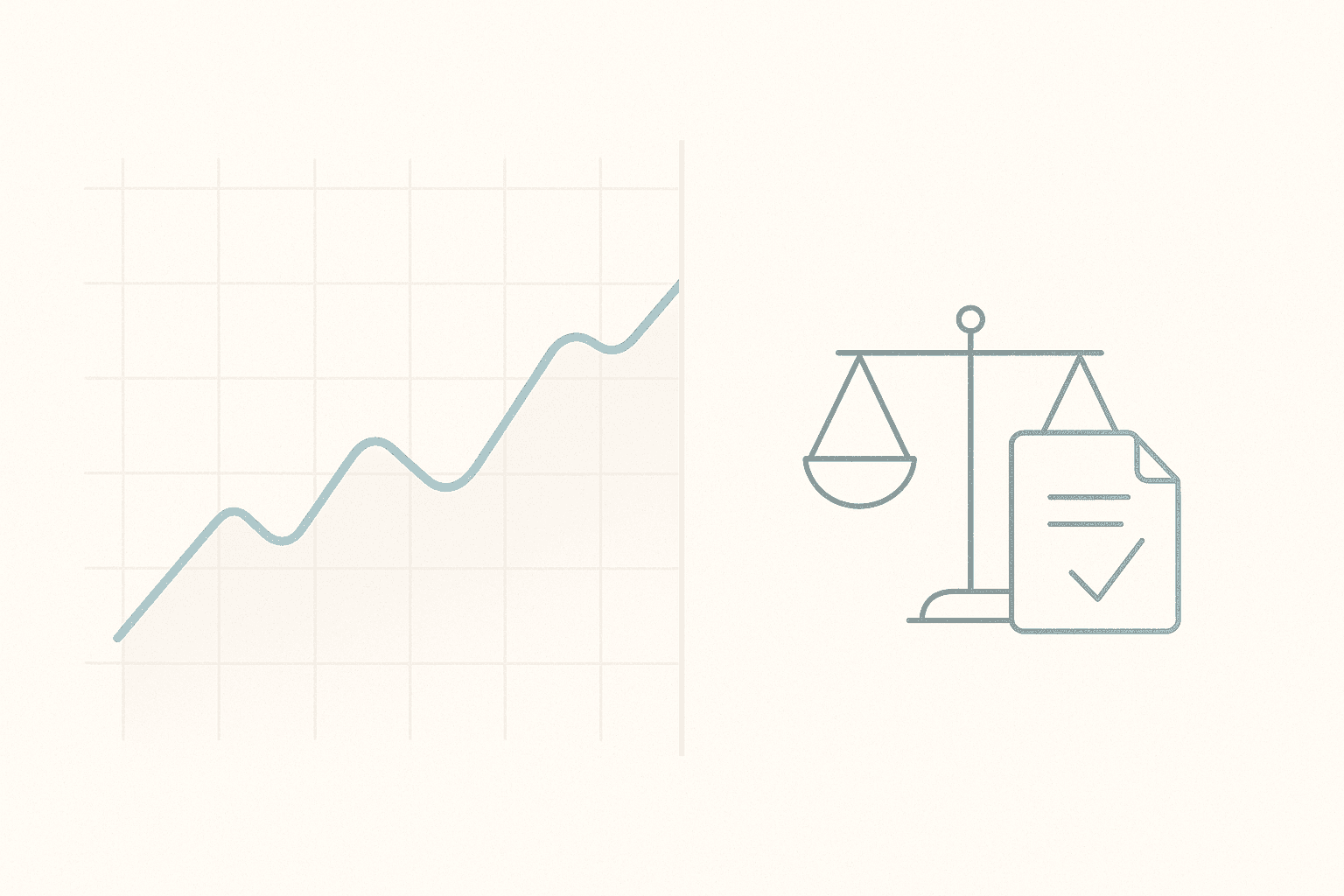AI Lawyer Blog
Performance Improvement Plan (PIP) Template — Free Download

Greg Mitchell | Legal consultant at AI Lawyer
3
A Performance Improvement Plan (PIP) is a formal document that outlines specific goals, timelines, and resources to help employees improve their performance. Rather than being punitive, a well-crafted PIP is a supportive tool that provides structure for both the employee and the employer. It ensures transparency, sets measurable objectives, and demonstrates that the organization is giving the employee a fair chance to succeed before considering further action.
In 2025, PIPs have become more relevant than ever due to evolving workplace dynamics such as remote work, increased employee turnover, and rising legal scrutiny around terminations. According to Gallup, only 21% of employees feel they are managed in a way that motivates them to do outstanding work, showing the importance of structured support systems like PIPs. Similarly, a survey by HR.com found that 67% of HR professionals view PIPs as essential for reducing wrongful termination risks.
Download the free Performance Improvement Plan or customize one with our AI Generator — then have a local attorney review before you sign.
This guide is part of our Employment Legal Templates series — ensuring fair, enforceable workplace relationships for both employers and employees.
You Might Also Like:
1. What is a Performance Improvement Plan?
A Performance Improvement Plan (PIP) is a structured document used by employers to address underperformance. It sets clear expectations, timelines, and performance metrics, often with additional training or mentorship to help the employee meet their goals.
Rather than being an immediate step toward termination, a PIP is designed to help employees succeed by addressing specific performance issues. It provides a clear path forward, protects employers from legal claims of unfair dismissal, and helps retain talent by giving employees a chance to improve.
2. Why PIPs Matter in 2025?
The modern workplace is more complex than ever. Employees are expected to adapt to rapid technological changes, hybrid work environments, and high-performance standards. PIPs ensure fairness and accountability for both sides.
Encourage development: Helps employees identify gaps and grow professionally.
Provide legal protection: Documentation reduces wrongful termination risks.
Improve retention: Employees often succeed when given structured support.
Align goals: Ensures employees understand company expectations.
Increase fairness: Provides equal opportunity to correct underperformance.
3. Key Components of a Performance Improvement Plan
A strong PIP should include:
Employee and manager details
Areas of concern: Specific behaviors or results that require improvement.
Performance expectations: Clear and measurable standards.
Support and resources: Training, coaching, or mentoring opportunities.
Timeline: Typically 30, 60, or 90 days depending on the severity of issues.
Monitoring process: Scheduled check-ins and progress reviews.
Consequences of non-compliance: Potential termination or reassignment.
Signatures: Both employee and manager acknowledgment.
4. Types of Performance Improvement Plans
Short-term PIP: 30 days, used for minor issues.
Medium-term PIP: 60 days, allows more time for measurable improvements.
Long-term PIP: 90 days or longer, used for significant underperformance or developmental issues.
Developmental PIP: Focuses on career growth and upskilling rather than disciplinary action.
5. Step-by-Step Guide to Drafting a PIP
Step 1 — Identify performance gaps: Use objective data such as KPIs, deadlines missed, or quality issues.
Step 2 — Set measurable goals: Define targets like sales numbers, project completion timelines, or client satisfaction scores.
Step 3 — Provide resources: Offer training, tools, or mentorship to support improvement.
Step 4 — Establish timelines: Choose realistic deadlines for achieving results.
Step 5 — Monitor progress: Schedule weekly or biweekly check-ins to track improvement.
Step 6 — Document everything: Keep written records of meetings and feedback.
Step 7 — Conclude the plan: Either confirm improvement, extend the PIP, or proceed with termination.
6. Legal Context and Compliance Considerations
Employers must draft PIPs carefully to avoid legal pitfalls. Poorly written plans can appear discriminatory or unfair, exposing organizations to lawsuits.
Key considerations include:
Non-discrimination laws: Ensure plans don’t unfairly target protected classes.
Consistency: Apply PIPs evenly across employees with similar issues.
Documentation: Keep detailed records to provide evidence in legal disputes.
Confidentiality: Performance issues should remain private and handled respectfully.
By following these rules, employers strengthen their legal standing and promote fairness.
7. Global Perspectives on Employee Performance Management
United States: PIPs are widely used in HR best practices for performance correction.
European Union: Performance management often focuses more on developmental support than formal disciplinary processes.
United Kingdom: PIPs are standard but must comply with strict employee rights frameworks.
Asia-Pacific: Growing adoption in multinational corporations as part of modern HR strategies.
Canada: Employment law requires fairness and transparency in performance management, making PIPs useful tools.
8. Tips for Employers and Managers
Be specific: Avoid vague criticism — state measurable issues and goals.
Stay supportive: Frame the PIP as an opportunity rather than a punishment.
Communicate clearly: Ensure employees understand expectations and timelines.
Document consistently: Written proof of performance issues protects against disputes.
Review progress fairly: Acknowledge effort and provide feedback regularly.
9. Performance Improvement Plan Checklist
Employee and manager details
Areas requiring improvement
Performance goals and metrics
Resources and support
Timeline for improvement
Monitoring process
Consequences of not meeting expectations
Employee and manager signatures
Download the Full Checklist Here
10. FAQs
Q: Is a Performance Improvement Plan a step toward termination?
A: Not necessarily. While a PIP may precede termination if issues persist, its main purpose is to help employees improve. Many employees successfully complete PIPs and continue as valued team members, especially when employers provide genuine support.
Q: How long should a PIP last?
A: Most PIPs last between 30 and 90 days, depending on the severity of the issues. Shorter timelines may work for minor concerns, while more complex problems often require 90 days or longer. Employers should choose realistic timeframes for measurable progress.
Q: Can an employee refuse to sign a PIP?
A: Yes, but refusal doesn’t invalidate the plan. Employers should document the refusal and continue implementing the PIP. Courts may still consider the plan valid if the employer can demonstrate it was communicated fairly. Signing typically acknowledges receipt, not agreement.
Q: What happens if an employee improves during the PIP?
A: If goals are met, the PIP is successfully concluded, and the employee continues in their role. Employers may remove the employee from formal monitoring but should continue regular feedback to sustain performance. Completing a PIP can even strengthen an employee’s career path.
Q: Are PIPs legally required?
A: No, but they are widely recommended. PIPs demonstrate that an employer gave the employee a fair chance to improve before taking harsher steps. This documentation can be invaluable in defending against wrongful termination claims and showing good-faith management practices.
Sources and References
Data and insights in this article are based on research from Gallup’s State of the Global Workplace Report, which found that only 21% of employees feel they are managed in a way that motivates outstanding performance, and the HR.com Performance Management Study indicating that 67% of HR professionals consider Performance Improvement Plans essential to reducing wrongful termination risks.
Legal and compliance guidance references the U.S. Equal Employment Opportunity Commission (EEOC) for non-discrimination standards, the U.S. Department of Labor for fair employment practices, and best-practice frameworks published by the Society for Human Resource Management (SHRM).
Comparative international perspectives draw from employment law and HR guidance under the U.K. Advisory, Conciliation and Arbitration Service (ACAS), the European Commission Employment Guidelines, and Employment and Social Development Canada regarding fair performance management standards.
Disclaimer
This article is for educational purposes only and does not constitute legal advice. Performance management laws and best practices vary by jurisdiction. Employers should seek guidance from an HR professional or attorney before drafting a PIP.
Get Started Today!
A Performance Improvement Plan is not just a formality — it is a roadmap to better performance, fairness, and accountability. In 2025, with workplace expectations rising, PIPs are one of the most effective tools for supporting employees while protecting employers legally.
Download the free Performance Improvement Plan or customize one with our AI Generator — then have a local attorney review before you sign.
Explore more resources in our Employment Legal Templates series to ensure fair and enforceable workplace relationships.
You Might Also Like:



